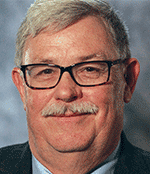Safety Leadership: How chronic unease supports safety excellence in transportation

Editor’s Note: Achieving and sustaining an injury-free workplace demands strong leadership. In this monthly column, experts from global consulting firm DEKRA share their point of view on what leaders need to know to guide their organizations to safety excellence.
The term “chronic unease” is a mindset for an effective approach to safety and risk management. A key characteristic of high-reliability organizations, this important state of mind is about accepting that we’re vulnerable to incidents, injuries and catastrophes – if work teams and leaders miss key changes in workplace exposure.
Everyone throughout an organization must be vigilant about developing and maintaining a group mindset that constantly examines these three questions:
- How can it happen here?
- What are we doing to prevent it from happening here?
- How effective are our efforts?
Chronic unease is about anticipating, identifying and responding to weak, early warning signals. In the pursuit of ensuring an organization has effective safeguards in place, pessimism and questioning are good qualities, as both are linked to expecting failure and tenacity and battling complacency.
When an organization incorporates chronic unease effectively, leaders create an environment in which everyone develops a heightened sense of anticipation. This means that weak signals no longer go unnoticed, but instead are seen as an indication that something needs attention. Chronic unease also refers to an open channel of communication. Individuals are no longer afraid to speak up, even if their concerns may turn out to be unfounded.
A state of mind preoccupied with potential failure is beneficial when it drives specific, planned and timely action to reduce risk and prioritize safety – even when it may introduce inefficiencies into daily work processes. The good news is that the behaviors associated with chronic unease can be taught, learned and even measured.
Let’s look at the transportation industry, such as rail, trucking and aviation, and see how chronic unease effectiveness could be enhanced. In aviation, close calls are on the rise. In rail, there’s a heightened awareness around – and reporting of – derailments, primarily because of the recent event in East Palestine, OH. In trucking, fatalities occur often because of crashes or dock pull-away incidents. In each of these, a renewed focus on anticipation skills could help avoid or reduce catastrophic events.
Below are steps that work teams and leaders in the transportation industry could take to incorporate chronic unease into their safety culture and support their safety efforts. Ask triggering questions. This will confirm that weak signals (and small incidents) are being recognized during periods of low-incident reporting.
- Recognize that problems are always possible, as no system is without gaps.
- Encourage and celebrate the reporting of weak signals.
- Investigate anomalies and variances to improve learning and understanding.
Make time each month to assess the attitude of workers in yards, ramps or department, as they change their mindset from “It can’t happen here” to “How can it happen here?”
Provide observational feedback to teams. Let them know how they’re doing when it comes to detecting changes in exposure and taking control of human factors that naturally creep into operations if left unchecked.
So, how is your journey progressing toward becoming a high-reliability organization?
This article represents the views of the authors and should not be considered a National Safety Council endorsement.
 Michael Sickler is a principal consultant in DEKRA’s (dekra.us) consulting practice. With nearly 40 years of experience in the rail industry, he has a wealth of hands-on leadership expertise in quality control, rail safety, yard management, program development, coaching, customer service and retention. Sickler has led change efforts that achieved sustained efficiency and reliability. He’s an influential communicator and mentor with seasoned problem-solving skills.
Michael Sickler is a principal consultant in DEKRA’s (dekra.us) consulting practice. With nearly 40 years of experience in the rail industry, he has a wealth of hands-on leadership expertise in quality control, rail safety, yard management, program development, coaching, customer service and retention. Sickler has led change efforts that achieved sustained efficiency and reliability. He’s an influential communicator and mentor with seasoned problem-solving skills.
 Richard Smith, a senior vice president in DEKRA’s consulting practice, is an accomplished safety leadership coach who routinely helps managers through the C-Suite achieve their organizational strategies and personal goals. He has coached hundreds of leaders in organizations ranging from domestic railroads and utilities to aviation, construction and mining.
Richard Smith, a senior vice president in DEKRA’s consulting practice, is an accomplished safety leadership coach who routinely helps managers through the C-Suite achieve their organizational strategies and personal goals. He has coached hundreds of leaders in organizations ranging from domestic railroads and utilities to aviation, construction and mining.
Direct to your inbox: Sign up to be notified in email about new "Safety Leadership" columns.
Post a comment to this article
Safety+Health welcomes comments that promote respectful dialogue. Please stay on topic. Comments that contain personal attacks, profanity or abusive language – or those aggressively promoting products or services – will be removed. We reserve the right to determine which comments violate our comment policy. (Anonymous comments are welcome; merely skip the “name” field in the comment box. An email address is required but will not be included with your comment.)

